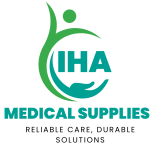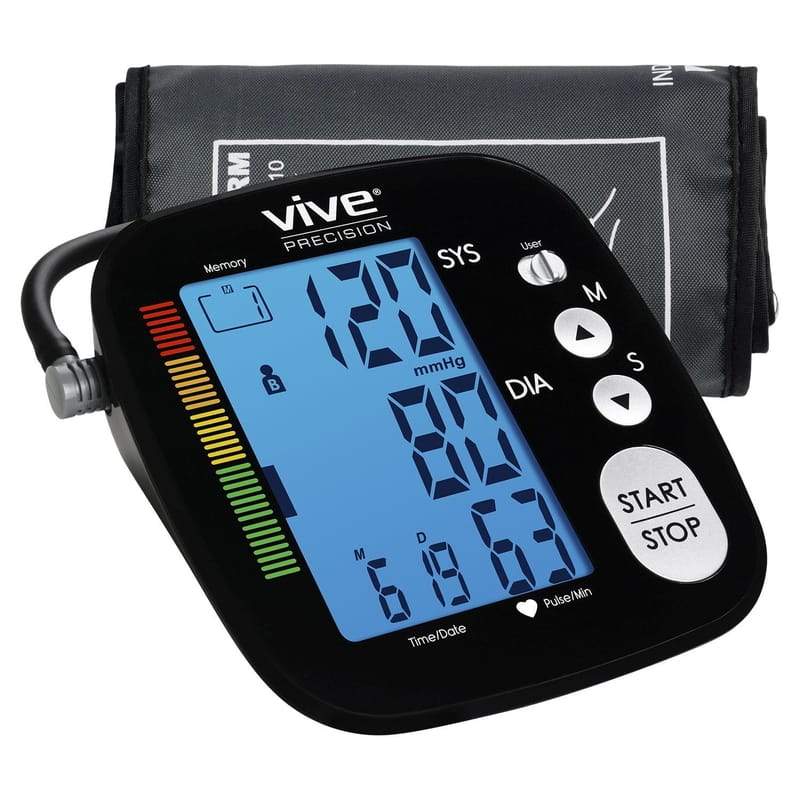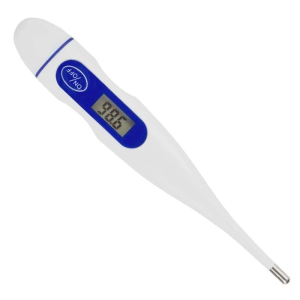A blood pressure monitor consists of a cuff, inflation mechanism (manual pump or automatic), and a digital or analog display. The device measures two key values:
- Systolic Pressure (Top Number): Pressure when the heart beats
- Diastolic Pressure (Bottom Number): Pressure when the heart rests
Modern blood pressure monitors come with automatic inflation, large digital screens, memory storage, and Bluetooth connectivity for tracking readings over time.
Key Features
✅ Accurate & Fast Readings – Displays blood pressure within seconds
✅ Automatic Inflation & Deflation – Comfortable and easy to use
✅ Large Digital Display – Clear readings with high visibility
✅ Memory Storage – Saves previous readings for tracking trends
✅ Irregular Heartbeat Detection – Alerts users to potential heart issues
✅ Portable & Lightweight – Ideal for home and travel use
✅ Bluetooth Connectivity – Syncs data with mobile apps for easy monitoring
Benefits of a Blood Pressure Monitor
✔ Early Detection of Hypertension – Helps prevent heart disease and stroke
✔ Convenient At-Home Monitoring – No need for frequent doctor visits
✔ Tracks Health Trends – Monitors fluctuations in blood pressure over time
✔ Helps with Medication Management – Ensures effectiveness of treatments
✔ Reduces White Coat Syndrome – Provides relaxed, more accurate readings at home
Who Should Use a Blood Pressure Monitor?
🔹 Individuals with Hypertension (High BP) – Essential for regular monitoring
🔹 Seniors & Heart Patients – Helps manage cardiovascular health
🔹 Pregnant Women (Pre-eclampsia Monitoring) – Ensures safe pregnancy tracking
🔹 Fitness Enthusiasts & Health-Conscious Individuals – Keeps blood pressure in check
🔹 Diabetics & Kidney Disease Patients – Helps monitor risk factors
How to Use a Blood Pressure Monitor Correctly
- Sit in a relaxed position, keeping your back straight and feet flat on the floor.
- Place the cuff on your upper arm, aligning it with your heart level.
- Start the device (press the button for digital or pump for manual).
- Remain still and avoid talking while the cuff inflates and deflates.
- Read the results on the display (systolic/diastolic and pulse rate).
- Record your readings or sync them with a health-tracking app.
Specifications
🔸 Measurement Range: Typically 0-300 mmHg
🔸 Accuracy: ±3 mmHg for blood pressure, ±5% for pulse rate
🔸 Cuff Size: Standard (22-32 cm), Large (32-42 cm) available
🔸 Power Source: Battery-operated, rechargeable, or plug-in
🔸 Connectivity: Some models offer Bluetooth or USB syncing
A blood pressure monitor is an essential tool for maintaining heart health and preventing complications related to hypertension and cardiovascular diseases. Whether for daily health tracking, managing medical conditions, or supporting an active lifestyle, a reliable BP monitor ensures accurate, quick, and convenient blood pressure monitoring at home.
Frequently Asked Questions (FAQs)
1. What is a blood pressure monitor?
A blood pressure monitor is a device used to measure systolic and diastolic blood pressure to help track heart health and detect issues like hypertension (high blood pressure).
2. Who should use a blood pressure monitor?
🔹 Individuals with high or low blood pressure
🔹 Heart disease and stroke patients
🔹 Pregnant women (pre-eclampsia monitoring)
🔹 Diabetics and kidney disease patients
🔹 Seniors and those at risk for hypertension
🔹 Health-conscious individuals tracking wellness
3. How do I choose the right blood pressure monitor?
Look for features like:
✔ Automatic vs. Manual: Digital monitors are easier to use than manual ones.
✔ Cuff Size: Ensure the cuff fits your arm (standard: 22-32 cm, large: 32-42 cm).
✔ Memory Storage: Saves past readings for easy tracking.
✔ Bluetooth/App Connectivity: Syncs data with mobile apps for better health monitoring.
✔ Accuracy & Validation: Choose a device approved by medical professionals.
4. How does a blood pressure monitor work?
The cuff inflates to temporarily stop blood flow, then slowly deflates while detecting pressure changes. The device measures systolic (heartbeats) and diastolic (resting) pressure and displays the readings.
5. What is a normal blood pressure reading?
✔ Normal: Below 120/80 mmHg
✔ Elevated: 120-129/less than 80 mmHg
✔ Hypertension (Stage 1): 130-139/80-89 mmHg
✔ Hypertension (Stage 2): 140+/90+ mmHg
✔ Hypertensive Crisis: 180+/120+ mmHg (Seek medical attention immediately)
6. How often should I check my blood pressure?
- If you have high BP: At least twice a day (morning & evening)
- For general health monitoring: A few times per week
- As per doctor’s recommendation based on your health condition
7. Can I use my blood pressure monitor on my wrist?
Yes! Wrist monitors are available, but upper arm monitors are generally more accurate. If using a wrist monitor, keep your arm at heart level for a proper reading.
8. Can I check my blood pressure multiple times in a row?
Yes, but wait at least 1-2 minutes between readings to allow your blood vessels to return to normal.
9. Can stress or anxiety affect my blood pressure reading?
Yes! Stress, caffeine, smoking, and physical activity can temporarily raise blood pressure. It’s best to relax for 5 minutes before measuring.
10. Can I talk or move while measuring my blood pressure?
No! Talking or moving can affect accuracy. Stay still and keep your arm relaxed at heart level.
11. What should I do if my blood pressure reading is too high?
✔ Rest for a few minutes, then take another reading.
✔ Avoid caffeine, salty foods, and stress.
✔ Consult a doctor if readings remain high.
12. How do I ensure accurate readings?
✔ Sit upright with feet flat on the floor.
✔ Place the cuff at heart level.
✔ Avoid caffeine, smoking, or exercise 30 minutes before measuring.
✔ Measure at the same time daily for consistency.
13. Can I use my blood pressure monitor without a doctor’s prescription?
Yes! Blood pressure monitors are available without a prescription for home use.
14. How long do blood pressure monitors last?
A good-quality monitor can last several years, but calibration is recommended every 2-3 years to maintain accuracy.
15. Where can I buy a blood pressure monitor?
You can purchase them at pharmacies, medical supply stores, or online. Look for models that are clinically validated for the best accuracy.
Take control of your heart health—monitor your blood pressure today!








Reviews
There are no reviews yet.